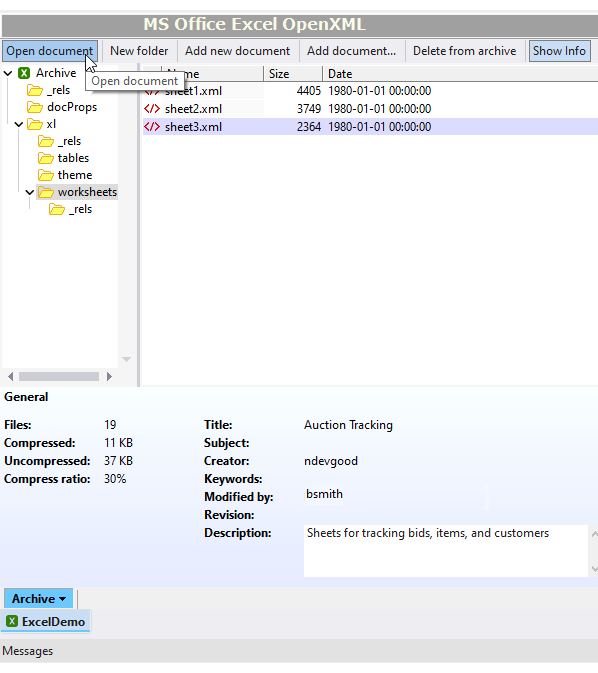The XMLSpy Archive View provides native support creating and editing zipped archives such as Office (version 2007 and higher) or WinZip files. Individual files can be opened from the Archive View, edited in one of XMLSpy's editing views, and then saved directly back to the ZIP archive.
You may also add and delete files and folders in the archive.
The Archive View displays included folders in an expandable tree view, and documents contained in the selected folder are listed with size and data details. Below that, an info window can be toggled on or off to view general information about the zipped archive, such as the number of files it contains, its uncompressed and compressed sizes, and the compression ratio, as well as document metadata (i.e., properties) for Microsoft Office documents.




